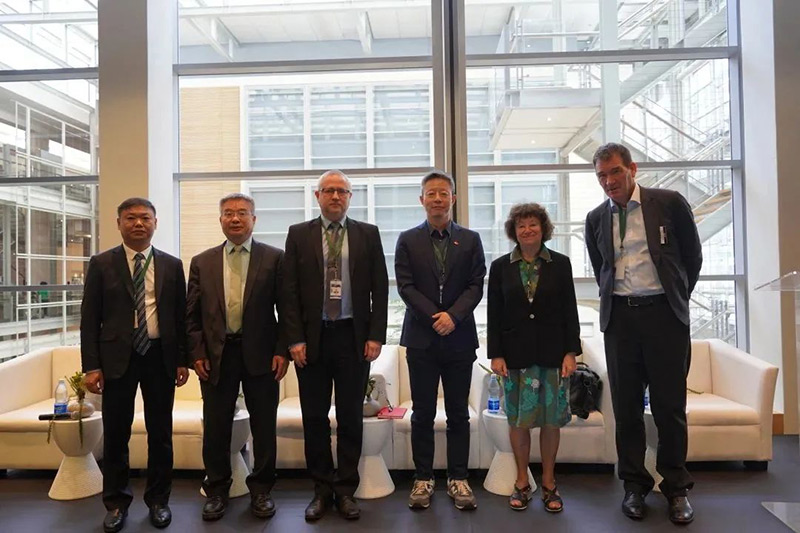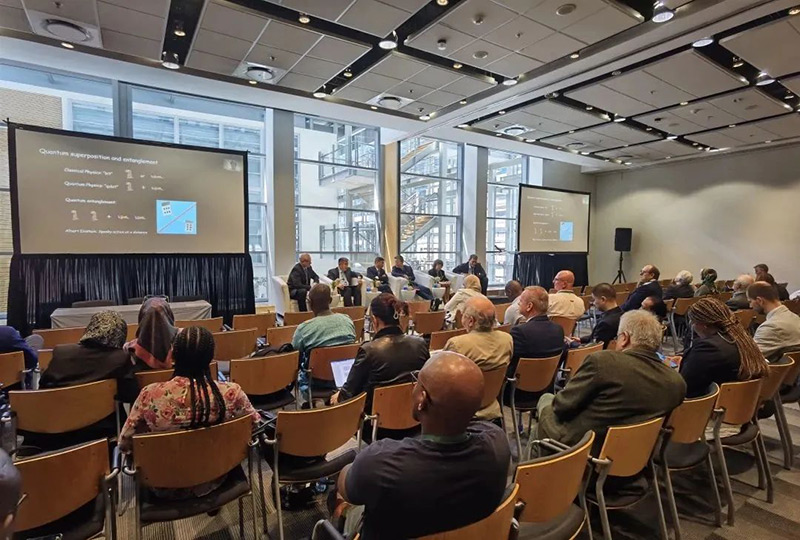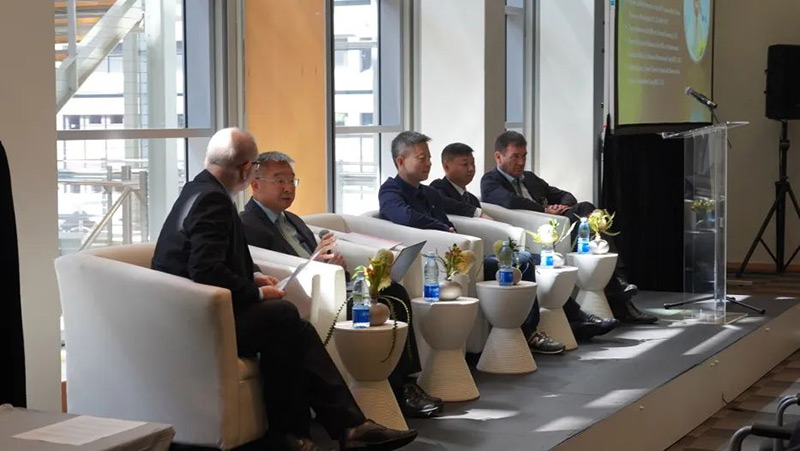【2022 WSF】Global Challenges Call for Globally Accessible Research Facilities: How to Leverage Large Research Infrastructure for the Conduct of Basic Science for Sustainable Development
------ Side Event on Leveraging Large Research Infrastructures for Sustainable Development Held at the 10th World Science Forum in Cape Town
On December 6th, a side event entitled “Basic Science for Sustainable Development: From the Perspective of Leveraging Global Large Research Infrastructures” was co-organized by the Alliance of International Science Organizations (ANSO), the Hungarian Academy of Sciences (MTA) and the Department of Science and Innovation (DSI) of South Africa. This event looked into the current availability and future potential of large research facilities at the service of basic science working towards the fulfilment of the UN’s Sustainable Development Goals (SDGs). It was part of the celebration for the International Year of Basic Sciences for Sustainable Development.
Prof. Zsolt Fülöp, President of the National Research Infrastructure Committee of Hungary and Doctor of MTA, chaired the session. Around sixty audiences from different countries attended the event on site.
As arranged, Prof. CAO Jinghua, the Executive Director of the ANSO Secretariat, gave an opening address. He stressed that mega-science facilities often have clear scientific objectives and wide perspectives of application, and often require big investment and advanced cutting-edge technologies. Because of these, they tend to lead and guide advances of academic disciplines, but to bring about major scientific discoveries and innovations through a continuous exploration into the macro- and microscopic worlds. With a deeper and better understanding of both worlds, humankind is sure in a better position to achieve more transformative tech breakthroughs that will serve and benefit sustainable development. He also emphasized the significant importance that China attaches to international cooperation in mega-science research.
The keynote speakers of the session presented the R&D and achievements of various large-scale facilities in operation and construction on five continents, with a special focus on China, Europe and South Africa. Special attention was given to the impact of such infrastructure on societies and sustainable development. The presentation and discussion led to the point that while the primary aim of these facilities might be to serve basic research, they all end up in making valuable additional contributions to our grappling with the main challenges we face such as health, energy, materials development and communication.
Prof. LI Di, the Chief Scientist of the Five-hundred-meter Aperture Spherical radio Telescope (FAST), the National Astronomical Observatories (NAOC) of the Chinese Academy of Sciences, briefed the stories of the centuries from Arecibo to FAST, with a special focus on collaborative research project via FAST and achievements in several major directions, such as atomic hydrogen, neutral hydrogen, pulsar, fast radio bursts (FRBs) and extra-terrestrial planets.
Prof. Catherine Cesarsky, Director-General of the International Square Kilometre Array Observatory (SKAO), introduced SKAO-an inter-governmental organization composed of member states from five continents, and its relation to UN SDGs. With its construction commencement ceremony just held, SKA project in South Africa will promote Africa’s involvement in the advancement of large research infrastructures, the upgrade of science and education as well as in addressing societal challenges such as promoting tourist industry.
Prof. HU Jiansheng, Deputy Director of the Institute of Plasma Physics of the Chinese Academy of Sciences, presented how clean fusion energy benefits human sustainable development with Experimental Advanced Superconducting Tokamak (EAST) as an example. Benefiting from its cooperation with more than 120 research institutions around the world, EAST that aims to produce sustainable energy has also contributed to the addressing of common challenges and creation of powerful social and economic impacts.
Prof. Andrew Harrison, Director of Science of the ELI (Extreme Light Infrastructure) Consortium, demonstrated ELI’s evolution as a user facility for small science. Besides, ELI also shoulders the responsibility of training a new generation of scientists and experts with summer schools and training to the young scientists from various parts of the world.
Prof. CHEN Yu’ao, Executive Dean, School of Physical Sciences, University of Science and Technology of China (USTC), gave a talk on “Quantum Leap: Global Quantum Communication Network and Future Aspects”. He introduced the story of Micius, a quantum science satellite launched by China in 2016, which demonstrated intercontinental quantum key communication for the first time and contributed to the 2022 Nobel Prize in Physics. It is believed that this satellite will play a major role in the development of quantum internet in the future.

In the panel discussion, the speakers had heated discussions centering the core questions raised, and shared their insights on the running and operation of different facilities, and their thoughts on how big-science facilities can benefit the African countries and future collaborations possibilities and opportunities. All agreed that big science facilities enable a continuous exploration of the unknown. Further research and collaborations will lead to solutions and technologies to lots of the challenges to be overcome in advancing the UN SDGs.



